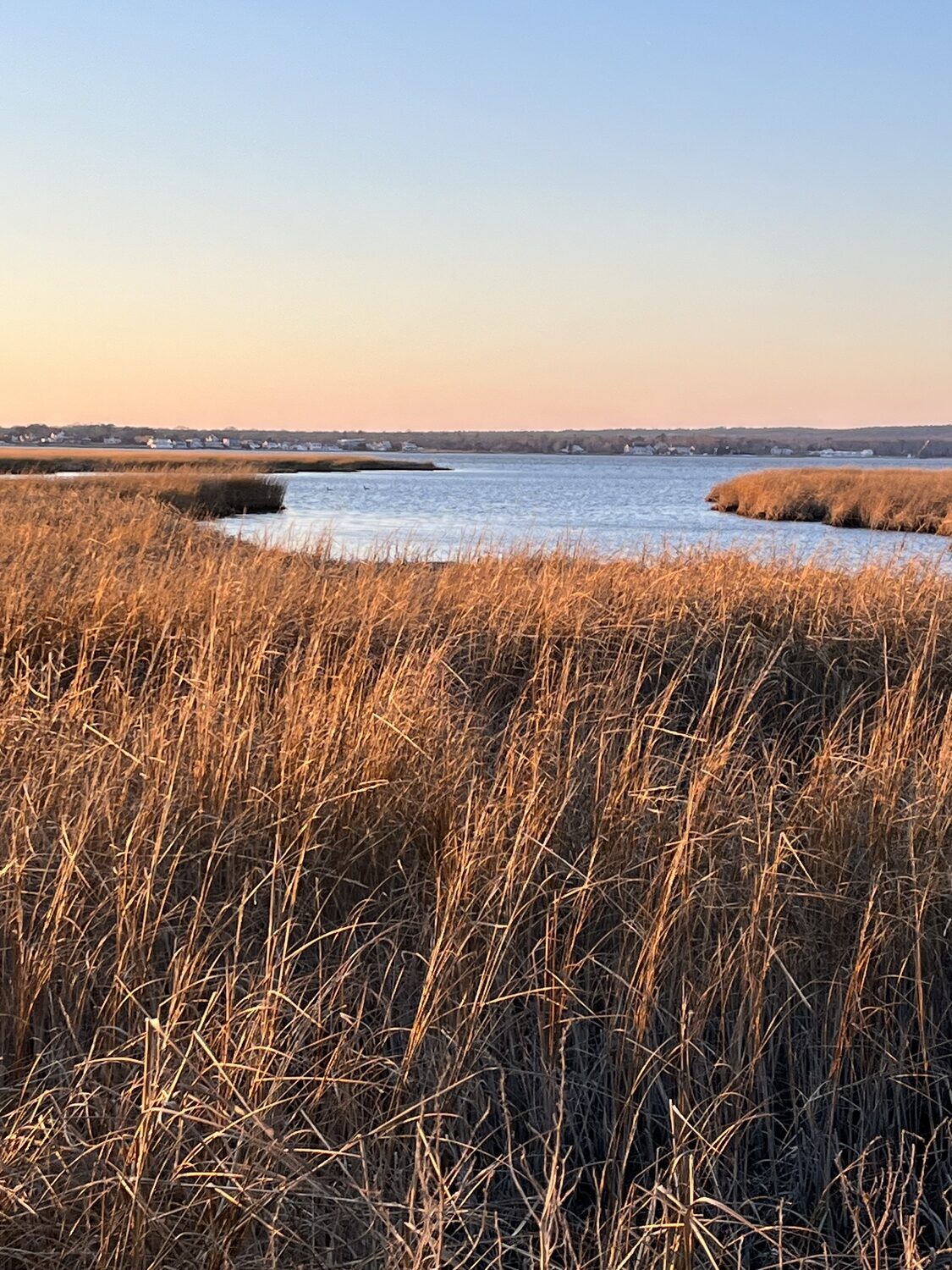
Wetlands are places where the land is covered by or saturated with water — salt, fresh or somewhere in between — either seasonally or permanently. A wetland functions as its own distinct ecosystem.
We can differentiate a wetland from other types of land or bodies of water primarily by the vegetation and plants (hydrophytes) that have adapted to its watery (hydric) soil. Wetlands exist in many kinds of climates, on every continent except Antarctica. They vary in size from isolated prairie potholes to huge salt marshes and are found along coasts and inland.
Southampton Town wetlands include freshwater, brackish, and tidal wetlands. In addition to their scenic beauty, they are indispensable to wildlife and to the environment. They provide important habitat and breeding grounds for fish, birds, and shellfish. Migratory birds use wetlands for breeding and for way stations during migration. Wetlands filter out pollutants entering our waters thus keeping our drinking and the surface waters in our lakes, streams, bays, creeks, coves, and estuaries healthy and able to support aquatic life.
If these are not enough reasons for preserving wetlands at all costs, the role they play in protecting our coastlines from flooding during storms and high or spring tides certainly is. Not only does the dense root system of coastal wetlands help anchor the soil and prevent coastal erosion, but wetlands disrupt the flow of water and serve as a buffer against hurricanes and storm surges. They also play a significant role in fighting global warming. How? Wetlands possess carbon capturing abilities that keep the heat-trapping gas that contributes to climate change out of the atmosphere. In fact, wetlands can store 50 times more carbon than rain forests.
About 87 percent of the world’s vital wetlands have already been destroyed in the past 300 years, but mostly since 1900 largely due to human activity. Pollution from excessive nitrogen, pesticides, filling of wetlands, removal of vegetation, building construction, changes in water levels, and drainage patterns are causes.
The wetlands of Southampton Town are no exception to this trend. Although there are federal and state regulatory programs in place to protect wetlands, they are not considered strong enough by many. For example, the recent U.S. Supreme Court decision in Sackett v. Environmental Protection Agency held that wetlands without a “continuous surface connection to waters of the U.S.” are not covered under the provisions of the Clean Water Act, thus considerably weakening wetland protection in this country. There are local restrictions that help protect our fresh and tidal wetlands such as Chapter 325 of the Southampton Town code. But that chapter only applies to the unincorporated hamlets of the town.
What can we do to help preserve this most valuable resource? Three effective steps are:
• Upgrade old/outdated septic systems with an I/A OWT system that greatly reduces the amount of nitrogen entering groundwater.
• Stop using fertilizers and herbicides and use natural botanical products to protect against mosquitoes and ticks.
• Use native species when planting trees and shrubs in wetland areas.
Join the thousands of East End residents who are concerned with environmental protection. Actively fight to preserve both wetlands and lands whose development would negatively impact wetlands. And, vote for stronger laws to protect them!
Anne Algieri is a member of the Westhampton Garden Club conservation committee.